Staying Fit


| Since finding a retired teacher living in a chicken coop and creating the National Retired Teachers Association (NRTA) in 1947, Dr. Ethel Percy Andrus had been committed to the cause of affordable, age-friendly housing for retired teachers. By 1952, she had decided to build NRTA’s own experimental retirement community where retired teachers could live graciously with dignity and purpose. In 1954, with financial backing from friends and colleagues, Dr. Andrus purchased the defunct Grey Gables Inn in Ojai, California, an attractive semi-rural community about 75 miles northwest of Los Angeles, some 15 miles inland from the Pacific Ocean.


AARP Membership— $12 for your first year when you sign up for Automatic Renewal
Get instant access to members-only products and hundreds of discounts, a free second membership, and a subscription to AARP the Magazine.
Dr. Andrus’ commitment to Grey Gables was so strong that she and her long-time friend and colleague, Ruth Lana, moved to Ojai to take personal charge of the project. They were pioneering no less than a new model of retirement for America. At that time, the only housing models for older persons were nursing homes — known as rest homes — and subsidized housing for the poor. At Grey Gables, residents would not be isolated, lonely or limited in their possibilities. They would be encouraged to remain engaged with the world — attend concerts, theater, classes at the community art center and meetings of the historical society; and to join Ojai’s civic, business, cultural and political groups.
In turn, the retired teachers of Grey Gables were able to use their considerable knowledge and experience to enrich the Ojai community. They, for example, volunteered at the community’s art center, museum, library, churches and schools.
“Grey Gables...has proved to the world that a residence can be successfully envisioned, built, administered and financed by the retired and for the retired, without subsidy or pleas for financial help.”
—Dr. Ethel Percy Andrus, founder, AARP
Opened in the fall of 1954 (and expanded in 1957), Grey Gables comprised 14 buildings set on 8 acres of landscaped gardens. There were 75 residential units located in the various buildings, two of which were two-stories and the rest one-floor ranch-style buildings. There were studio units and one- and two-bedroom apartments. Residents furnished their own apartments. Community rooms included a spacious lounge, lanai and a dining room where meals were served family-style. Recreational facilities included an outdoor heated swimming pool, shuffleboard courts and a hobby room with pool and ping pong tables. Within easy reach of the complex were nature walks and bicycle paths, fishing, golf, riding, tennis and bowling.





























































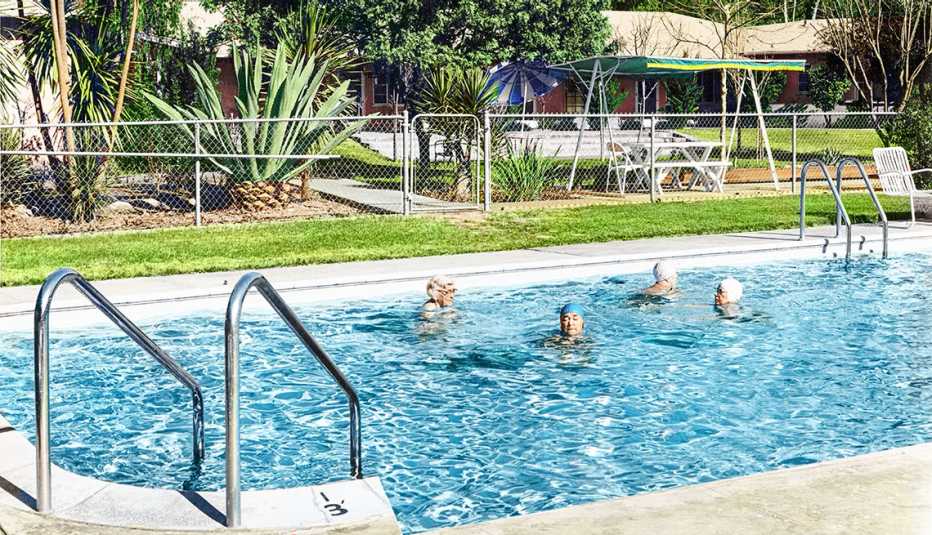
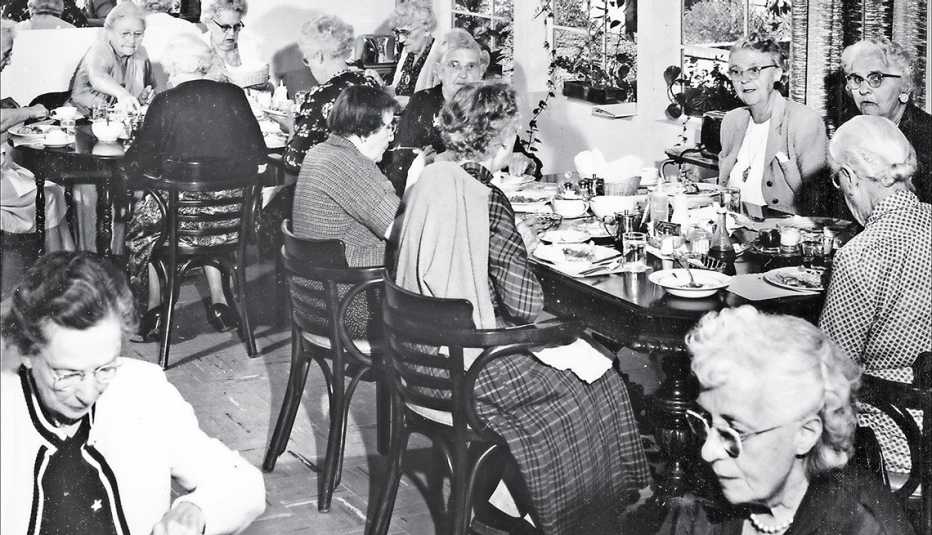
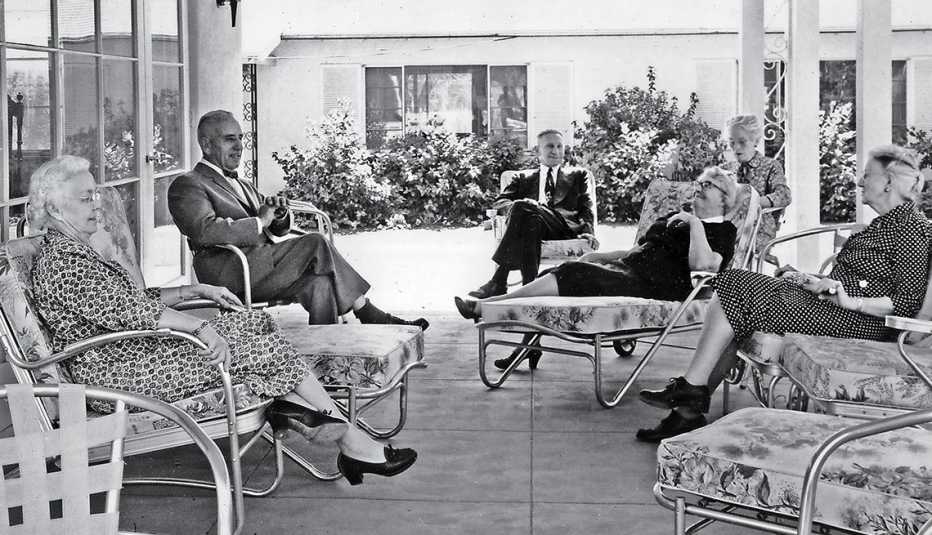
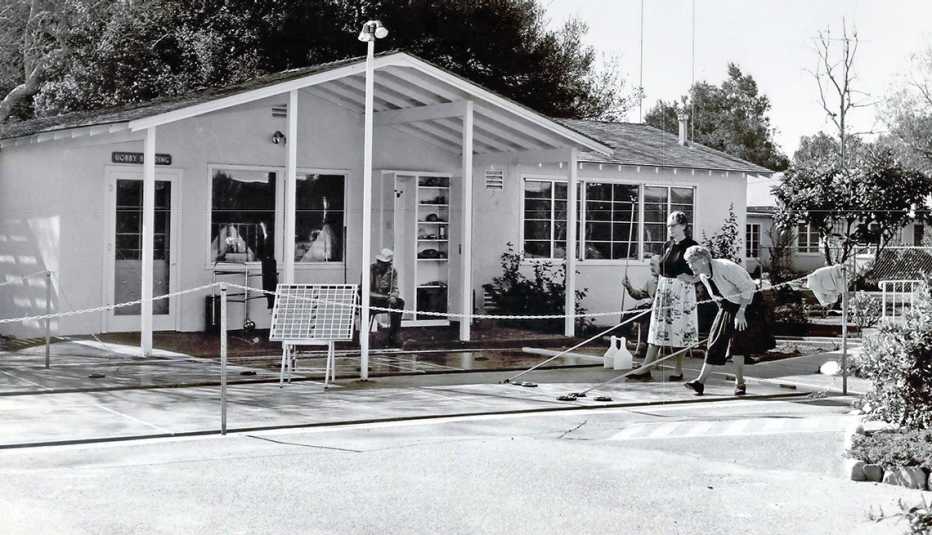
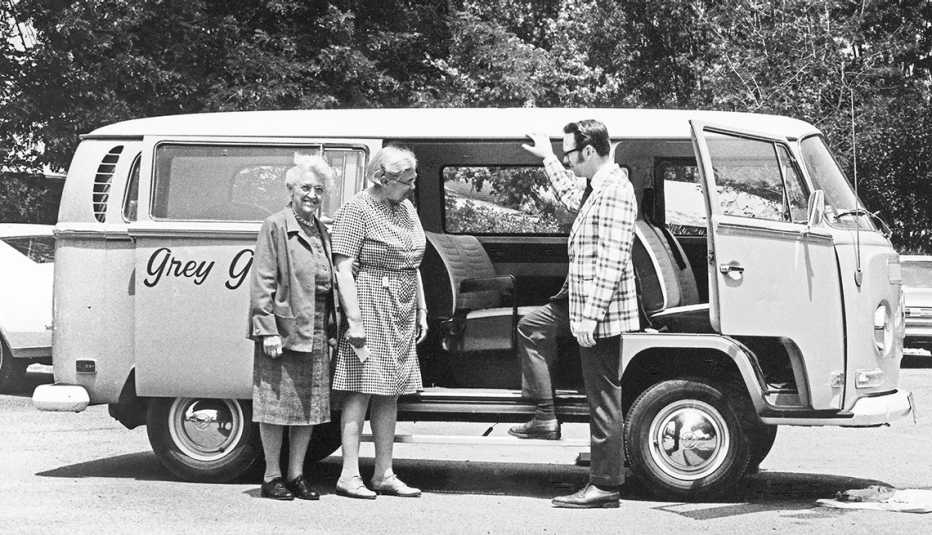




More From AARP
‘House of Freedom’ Teaches Aging in Place
Early ideas are a focus at White House conference
Start-up Magazine Promotes a New Image of Aging
‘Modern Maturity’ (now 'AARP The Magazine') is born
Founder’s Mission Begins With Chicken Coop Visit
Ethel Percy Andrus meets a retired teacher in povertyRecommended for You